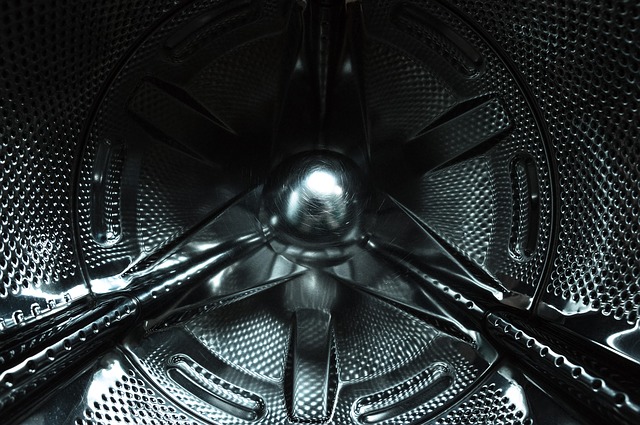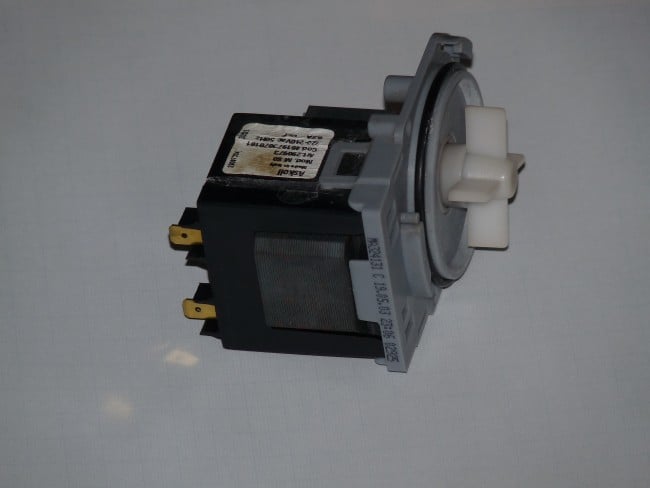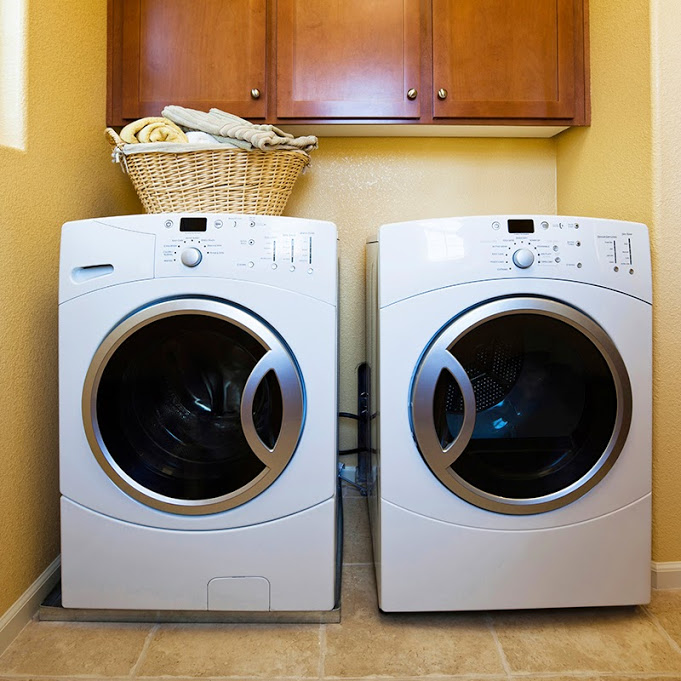On This Page:
With proper maintenance, the typical washing machine has a lifespan of up to 14 years, regardless of whether it is a front or top loader. However, that does not mean that the machine is immune to running into snags along the way, including clogs and broken parts. A leaking water line or washer that doesn’t drain may seem to be on its way out, but the part responsible for these processes, the water pump, is actually quite easy to fix or even replace on your own. Replacing a washer pump is not only a relatively easy repair, but also one that saves a lot of money. Both professional service and buying a new washer can cost hundreds, or even thousands, of dollars and often are simply not necessary.
Step-by-Step Guide to Washer Pump Replacement
Replacing the pump in a washing machine is a surprisingly simple job that most moderately handy people can accomplish within an hour or so and with basic parts and tools. The process and steps used are also the same ones used when simply cleaning out the pump or hose in the event of a clog.
Materials Needed
The most important part is a new washer pump. It can cost as little as $10 or as much as $75 or more. However, most homeowners pay between $25-$40 for a new pump. The other materials and tools you need include:
- Clamps
- Slot and Phillips screwdrivers (or 4-in-1)
- Needlenose pliers
- Nut driver
- 2×4 scraps, paint cans, or something else to prop up half of the machine
- A bucket, a sponge, and towels
How to Replace a Washer Pump
The process used to replace a washer pump is pretty simple because the pump is easily accessible once the face of the machine is off. Just make sure you have adequate space to complete the job. Specifically, there should be enough room to pull out the washer, prop it up, and move around it with extraneous parts in tow. Also, be aware of any water leaks, and line the floor with towels or tarps if necessary before beginning.
- Begin by unplugging the machine and bailing or draining out any water remaining in its basin. Then, clamp the hose to prevent leaks while working on the pump.
- Remove the face of the washer to expose the pump. This is easier to do for top-loading washers because the panel is a clean sheet of metal. In this case, simply prop up the front end on the 2x4s or paint cans, locate the two screws under the panel of the washer’s front, and use the Phillips head screwdriver to remove them. For front-loading washers, the removal is a bit more complex and specific to the model and its design. In general, you need to access the front panel from the top of the washer, disconnect the detergent dispenser and control panel, and remove the pump housing before you can access the screws securing the front panel to the washer.
- The pump is generally located at one of the bottom corners of the machine. Thoroughly inspect it and the translucent hose that connects to it, looking for clogs caused by common wash items including bobby pins, hair, or even small garments.
- If there is a visible clog, use the needlenose pliers to remove it.
- Once any clogs are removed, it is time to remove and replace the pump. Begin by disconnecting all the drain pump hoses from the pump. This includes the drain hose, recirculation hose, and tub-to-pump hose. Have a bucket or towel ready to catch any leaking water during this step.
- Once disconnected from its hoses, only a few screws are left holding the pump in. Locate these screws and detach them, releasing the broken pump from the machine.
- Take out the old pump and replace it with a new one, reversing the above steps to secure it and put the machine back together.
Other Issues to Consider
Regardless of what is wrong with this component, maintenance on a washer pump is not very difficult to perform. In fact, even a beginning DIYer can complete the repair in about an hour or so with basic tools. However, the first and most important step is determining whether the pump needs a simple repair or cleaning or if it needs a complete replacement. Unfortunately, the extent of the problem may not be possible to determine until after the washer is dismantled and the pump inspected.
For example, a washer barrel that fails to drain could simply have a clogged hose and need an easy cleaning. However, that same problem can be caused by broken fins, which require replacement. A leaking washer, on the other hand, usually points to a more complex problem that may not have anything to do with the pump. If it does, however, it likely requires a complete replacement.



 Washing Machines and Clothes Dryers
Washing Machines and Clothes Dryers  Building a Pergola: A Guide to Building Your Own or Hiring a Pro
Building a Pergola: A Guide to Building Your Own or Hiring a Pro  DIY Guide: How To Service Your Furnace
DIY Guide: How To Service Your Furnace  How to Hide Pesky Carpet Seams
How to Hide Pesky Carpet Seams 

We changed the new water pump, clean hose well, but machine doesn’t drain water. I don’t know how fix the problem